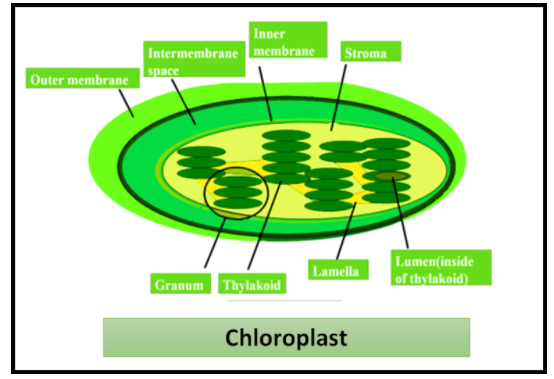
Answer
439.2k+ views
Hint: These organelles allow plants to use energy-rich molecules to absorb the energy of the Sun. Two membranes surround this organelle. Although they are much smaller, these organelles retain tiny, circular genomes that resemble those of cyanobacteria.
Complete answer:
- Like mitochondria, chloroplasts originally arose from an ancient symbiosis, when a photosynthetic prokaryote was engulfed by a nucleated cell.
- Chloroplasts, in fact, resemble modern cyanobacteria that remain similar to the cyanobacteria of three million years ago.

- The evolution of photosynthesis goes back much further, to the earliest cells that established the ability to absorb and use light energy to create molecules rich in energy.
- Photosynthetic cells began producing oxygen as these species gained the ability to split water molecules and use the electrons from these molecules, an occurrence that had drastic implications for the evolution of all living things on Earth.
- The outer membrane is permeable to small organic molecules, whereas it is less permeable to the inner membrane and is covered with transport proteins.
- The innermost matrix of chloroplasts, called the stroma, includes metabolic enzymes and several copies of the chloroplast genome.
- Chloroplasts also have a third internal membrane called the thylakoid membrane, which is heavily folded and appears as stacks of flattened discs.
- Light- harvesting complexes include thylakoids, including pigments such as chlorophyll, as well as electron transport chains used for photosynthesis. The chlorophyll inside the chloroplast influences the green color of the leaves.
So, the correct answer is ‘(a) Chloroplast’.
Note:
- Leucoplast imparts white color.
- Chromoplast contains various colored pigments.
- Chromoplasts are specially located in flowers (petals) .
Complete answer:
- Like mitochondria, chloroplasts originally arose from an ancient symbiosis, when a photosynthetic prokaryote was engulfed by a nucleated cell.
- Chloroplasts, in fact, resemble modern cyanobacteria that remain similar to the cyanobacteria of three million years ago.

- The evolution of photosynthesis goes back much further, to the earliest cells that established the ability to absorb and use light energy to create molecules rich in energy.
- Photosynthetic cells began producing oxygen as these species gained the ability to split water molecules and use the electrons from these molecules, an occurrence that had drastic implications for the evolution of all living things on Earth.
- The outer membrane is permeable to small organic molecules, whereas it is less permeable to the inner membrane and is covered with transport proteins.
- The innermost matrix of chloroplasts, called the stroma, includes metabolic enzymes and several copies of the chloroplast genome.
- Chloroplasts also have a third internal membrane called the thylakoid membrane, which is heavily folded and appears as stacks of flattened discs.
- Light- harvesting complexes include thylakoids, including pigments such as chlorophyll, as well as electron transport chains used for photosynthesis. The chlorophyll inside the chloroplast influences the green color of the leaves.
So, the correct answer is ‘(a) Chloroplast’.
Note:
- Leucoplast imparts white color.
- Chromoplast contains various colored pigments.
- Chromoplasts are specially located in flowers (petals) .
Recently Updated Pages
Who among the following was the religious guru of class 7 social science CBSE

what is the correct chronological order of the following class 10 social science CBSE

Which of the following was not the actual cause for class 10 social science CBSE

Which of the following statements is not correct A class 10 social science CBSE

Which of the following leaders was not present in the class 10 social science CBSE

Garampani Sanctuary is located at A Diphu Assam B Gangtok class 10 social science CBSE

Trending doubts
Which are the Top 10 Largest Countries of the World?

Fill the blanks with the suitable prepositions 1 The class 9 english CBSE

Give 10 examples for herbs , shrubs , climbers , creepers

A rainbow has circular shape because A The earth is class 11 physics CBSE

How do you graph the function fx 4x class 9 maths CBSE

What is pollution? How many types of pollution? Define it

The Equation xxx + 2 is Satisfied when x is Equal to Class 10 Maths

Difference between Prokaryotic cell and Eukaryotic class 11 biology CBSE

Why is there a time difference of about 5 hours between class 10 social science CBSE




